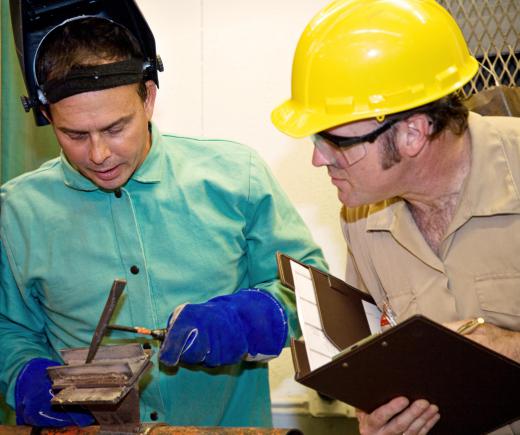At WiseGEEK, we're committed to delivering accurate, trustworthy information. Our expert-authored content is rigorously fact-checked and sourced from credible authorities. Discover how we uphold the highest standards in providing you with reliable knowledge.
What are the Best Tips for Hygiene Monitoring?
The best tips for hygiene monitoring are to test religiously and take nothing for granted. Hygiene monitoring is a process of tracking contamination levels to stay in control of clean production procedures. Most commercial food production operations monitor and control the hygiene of their equipment and employees using standardized testing procedures. Product waste and recalls are expensive mistakes that can often be avoided with vigilant adherence to health mandates and cleanliness standards. Strict implementation of hygiene monitoring procedures can increase productivity and efficiency to ultimately raise profits.
Food service industry professionals use a wide variety of tests and equipment to monitor the hygiene of their working environment. Most chefs carry a probe thermometer to make sure food temperatures stay at levels above where most bacterial growth occurs. A hygiene professional may be charged with running the same battery of tests several times a day to ensure that no change in the sanitary level has occurred. Factories that produce edible products often pull random samples off the production line to test them for hygiene compliance. Issues detected by tests are typically dealt with right away to avoid further contamination of additional products.

Employees must be provided with the means to do their job in a sanitary manner every day. Hazards and contaminants are introduced into a clean work environment by the people who leave and enter it. Workers who are properly trained and supplied with the appropriate sanitization and disposable protection materials are less likely to enter the clean workspace without prior preparation. Sanitary policies are only effective if they are backed up with consequences for neglecting them. Good cleaning habits are not foolproof and should never take the place of regularly scheduled hygiene monitoring.

Health standard charting keeps a work group informed of the success or failure of the response to a hygiene monitory program. The dirty truth about how clean an operation is running can often become an incentive for everyone to clean up their act. Employees are generally agreeable to improving the health standards of their work environment and cleanliness of the product. Reporting the findings of hygiene tests and investigations makes those participating in the operation feel like a part of the solution.

Many large corporations have a hygiene compliance officer who specializes in hygiene monitoring. The position holder is typically certified and trained in the aspects of hazard analysis and critical control points, or HACCP. HAACP is a compiled list of food safety and hygiene directives sent out by the United States Department of Agriculture.
AS FEATURED ON:
AS FEATURED ON:
















Discuss this Article
Post your comments